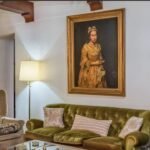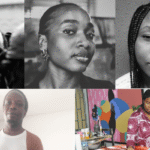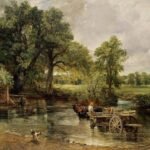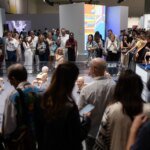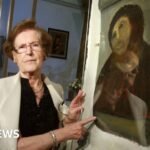
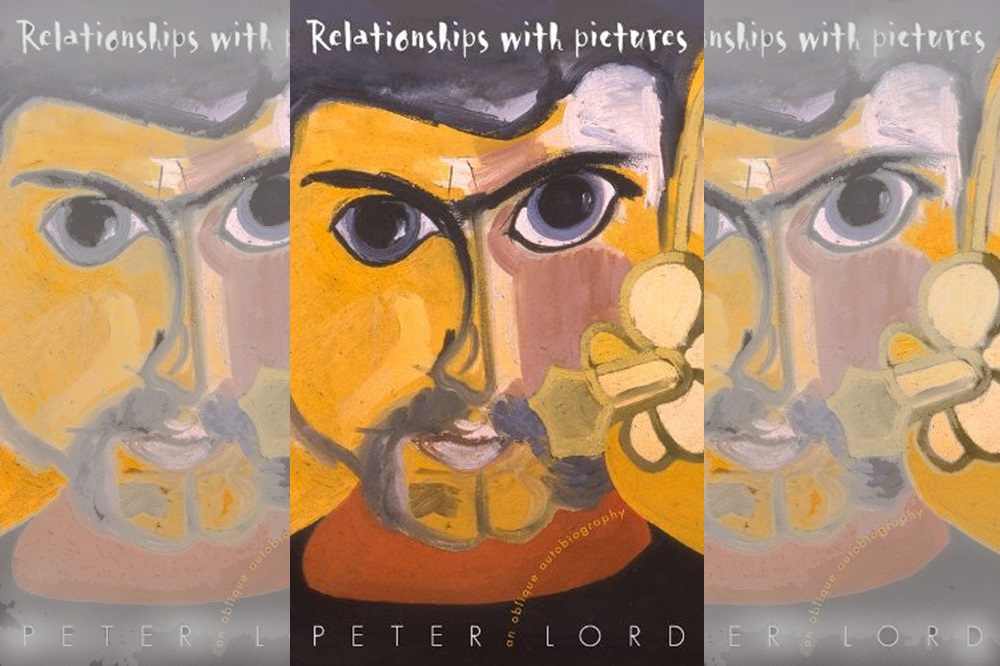
Adam Somerset
On 23 August, during the arts festival week in Machynlleth, Peter Lord received the Glyndŵr Medal at the Tabernacl at the Museum of Modern Art.
With the conferring of the medal he joined an illustrious group. Previous winners of the award include Sir Kyffin Williams, Jan Morris, Iwan Bala, Shani Rhys James and David Nash.
M Wynn Thomas was in conversation with Peter Lord for an hour. The books, he said, were “many of them classics.” Lord had effected a transformation in the way that the visual art of Wales is viewed. “That”, said Thomas, “could not be said of many scholars.”
On 16 November an exhibition opens at the National Library of Wales titled “No Welsh Art. An Exhibition Exploring the Myth with Peter Lord.”
Embracing 250 artworks, many from Lord’s personal collection, the exhibition runs until 13 September 2025.
Memoir
Lord has written a uniquely structured ‘s memoir. “Relationships with Pictures” (Parthian Books) links an artwork in each chapter to a stage in the life and development of the author. That development saw him move from being working artist- a maker of public sculpture- to historian and anatomist of the visual culture of Wales.
His intellectual concentration over the last three decades has been consistent. Every picture carries a story that is its own. Whether it lives up to or conforms in aesthetic terms to the great movements in European art is not the main point.
As expressed on the platform at the Tabernacl in August the interest, and the historical concern, lies in “why our art looks the way it does.” An approach that follows pure aestheticism has its limits. The object of Lord’s concern is to understand every artefact in its context, a moment, in both time and place, of the socio-cultural expression of Wales.
Mythology
As he puts it he had small patience for “the mythology of mainstream art history”, his watchword “let the picture speak for itself.”
The memoir is fronted by a quotation from Kenneth L Ames which sums it up succinctly: “There are many reasons to study why some objects are called art, what particular artefacts are so designated, and how the social organisations around the function. In short, art should be studied as a historical and sociological phenomenon.”
Lord links his quest of study to a point in his own life-passage to a pivotal time in the history of Wales. “Working in Wales in the aftermath of the debacle of the devolution referendum of 1979, it seemed to me that the absence of such institutional and intellectual validation of our own cultural product was among the root causes of the psychological dependency that the referendum result signified. I felt I could contribute to the encouraging the psychological shift necessary to secure political movement by working in the field of art history.”
History is ever movable
Lord’s summation of his prior work was published in one replete volume under the title “The Tradition”. Tradition, in Lord’s telling, is a story that culture devises to relate to itself. History is ever movable; the notion that Wales was unable to sustain an ecology of painters and patrons is “a historical nonsense.” A tradition becomes itself in the telling.
This theory of a movable and made tradition Lord locates in an essay of 1918 written by Van Wyck Brooks. The USA also for long held a cultural self-image of neo-colonial inferiority. Brooks called his essay “On Creating a Usable Past.” “The naming of things is the birth of consciousness. Without names we cannot think.”
Relationship with Pictures is published by Parthian Books and is available here.
The Tradition has been re-published by Parthian Books to coincide with the exhibition.
Support our Nation today
For the price of a cup of coffee a month you can help us create an
independent, not-for-profit, national news service for the people of Wales, by
the people of Wales.




